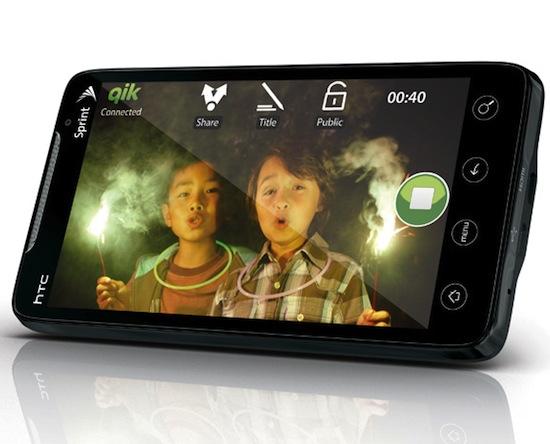
It's amazing to look back at how fast Android has taken over. Entering a market full of powerhouse veterans and dethroning nearly all of them in two and a half years is impressive to say the least. Not only has Android grown in the form of software, but it has gained the attention of several reputable hardware manufacturers and even given startups and unknowns a chance to compete with the big dogs.
While all of this has been going on, we've been introduced to some of the best and most advanced wireless devices in history. Arguably the most popular Android device to date is HTC's EVO 4G running on Sprint's WiMAX network. Released on June 4, 2010, the EVO gathered a huge following, selling out in most locations in no time flat. Stock was in short supply everywhere for months.
I worked in wireless sales at the time, and to put it lightly, the months surrounding that device's launch were pure chaos. Even a month after the launch, we would get 20 in stock, and they would be gone within a few hours.
Even though Verizon claims to be the sole reason for Android's success, the EVO 4G and HTC have a right to a large chunk of that claim, too. Anyone who has paid any attention to wireless news over the past year is well aware of that.
The EVO almost seems timeless as it surprises many of us in how long it has “stuck around.” In popularity and sales, the device has outlived the expected Android device shelf life, and fended off numerous Android counterparts for the crown.
The first flagship Android phone we saw after the launch of the EVO was the Motorola Droid X in July. Sharing many of the same specifications and riding on Verizon's larger (subscriber) network, some of us imagined this device would make quick work of the EVO. However, that was not the case. Motorola's MOTOBLUR user interface was the Achilles' heel of the Droid X.
Shortly thereafter, Samsung's Galaxy S line came in both August and July. In several different forms and the 4-inch display with Super AMOLED technology, the Captivate, Vibrant, Fascinate, and Epic 4G were bound to woo the market and possibly steal the crown from the EVO. However, Samsung sent these devices to market with Android 2.1 with the hollow promise of a quick Froyo update. It wasn't until recently that all of those devices finally got their taste of Froyo.
Next came the Motorola Droid 2 in August and the HTC G2 in October. The HTC myTouch 4G hit the market in November, and the Google device of 2010, the Samsung Nexus S, was introduced in December. In January we saw the EVO's smaller, keyboard wearing brother, the EVO Shift 4G. The HTC Inspire 4G and Motorola Atrix 4G have also released on AT&T, and the Samsung Galaxy S 4Ghit T-Mobile just last month.
Though all of these are excellent phones and seemingly popular among our readers, their launches went by without much hype in comparison. Even nine months after its release, the EVO is still one of the most highly regarded Android phones around. So what is it that makes the it less susceptible to Android's Law – or the dreaded short shelf life?
There is no one aspect that makes the EVO so great. It's the combination of several different benefits the phone brings. It was the first Android phone to wear a 4.3-inch display, its design falls under the very popular HTC design we have all grown to know and love, and it bears HTC's popular Sense UI. Sense UI organizes Android a little better, polishes the UI, and makes it easier for smartphone newcomers to understand. To add the icing to the cake, it was the first 4G phone to hit the States, and the plans on Sprint are about as affordable as they come. Starting at $69.99 per month with a $10 Premium Data fee, you can't beat that price for what you get.
Just like any device, the EVO didn't come without its faults either. It hit the market bearing Android 2.1, too. And like its upcoming cousin the ThunderBolt, it suffered from poor battery life. HTC was quick to fix the battery life issues and update the device to Froyo.
As more powerful devices make their way to the market, interest in the EVO will eventually begin to wane. It's impossible to predict how much longer the EVO will be the poster child for Android, but I think it's safe to say the title is rightfully held and will remain that way for a while. Or at least until the ThunderBolt hits shelves (if it ever does).
What to you guys think? Is the EVO 4G still the best Android device out there? Has another device superseded it? If not, what device do you think will?